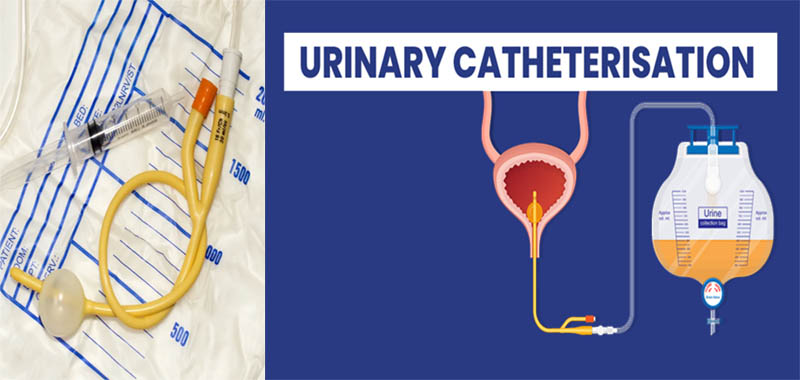By: medekomadmin
LIVIN’ WITH Urinary CATHETER
October 27, 2022

Catheterization is a technique used to drain and collect urine from the bladder with the help of a flexible tube called a catheter. The use of catheters is seen in people whose bladder is not empty fully (urinary retention) or at inappropriate times (incontinence). It is also used to inject liquid either for treatment or diagnosing certain conditions. A nurse or doctor usually inserts urinary catheters but self-catheterization is possible. Sized of the catheter is measured by the French catheter scale (F) and the most common sizes are found to be 10 F (3.3mm) to 28 F (9.3mm).
TYPES OF CATHETERS
There are four types of catheters-
- Indwelling catheter (Foley catheter)-It is the one which is left in the bladder because of the small water-filled balloon at the tip which prevents them from falling out. The catheter can be inserted in two ways,
- Through the urethra from where urine is removed outside the body
- Catheter is inserted by making a small hole in the belly which does not involve genital parts.
- Condom catheter-This type of catheter is used by men for a short term. These are used by men who have no urinary retention or urinary obstruction. There is a low chance of getting an infection by using it. Here, there is no need to insert a tube rather condom-like device is placed over the penis to remove it.
- Intermittent self-catheter-These type of catheter is usually used several times a day to once a week and thrown away every time we use it. It is used to empty the bladder at regular intervals whenever we go toilet. The catheter is also removed once the urine is drained out. One can use it by themselves by inserting it into the bladder through the urethra. This type of catheter is pre-lubricated so insertion can be done easily.
- Suprapubic catheter-These type of catheter is used when the person is not able to use intermittent catheter because of damage or blockage in the urethra. The catheter is inserted by making a hole into the abdomen directly into the bladder which allows urine to be directly drained out from the body. This type of catheter is changed every 4 to 12 weeks.
- Long-term catheterization leads to Urinary tract infection (UTI) because of bacteria in the bladder. These are treated by using antibiotics.
- Deposition of mineral salts on retention balloon, leading to catheter blockage.
- bladder spasms occur when there is no urine in the drainage bag. When the catheter is blocked by blood, thick sediment, or a kink in the drainage tubing.
- Leakage around the catheter is a sign of blockage which is associated with indwelling catheters.
- Bladder stones or bladder cancer can develop after using a catheter for many years.
- Injury while inserting the catheter.
- Clean the area where the catheters enter the body with plenty of water or by using a mild soap.
- Wash hands before and after with soap for using catheter equipment.
- Stay hydrated. Drink plenty of water to prevent infections and other issues.
- Eating high rich fibre fruits and vegetables to avoid constipation.
- Clean your drainage bag periodically.
- drainage bag is kept below the bladder
- Sexual activity is a very high risk for urinary infections,